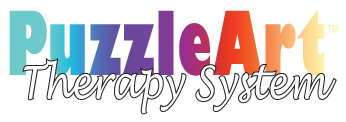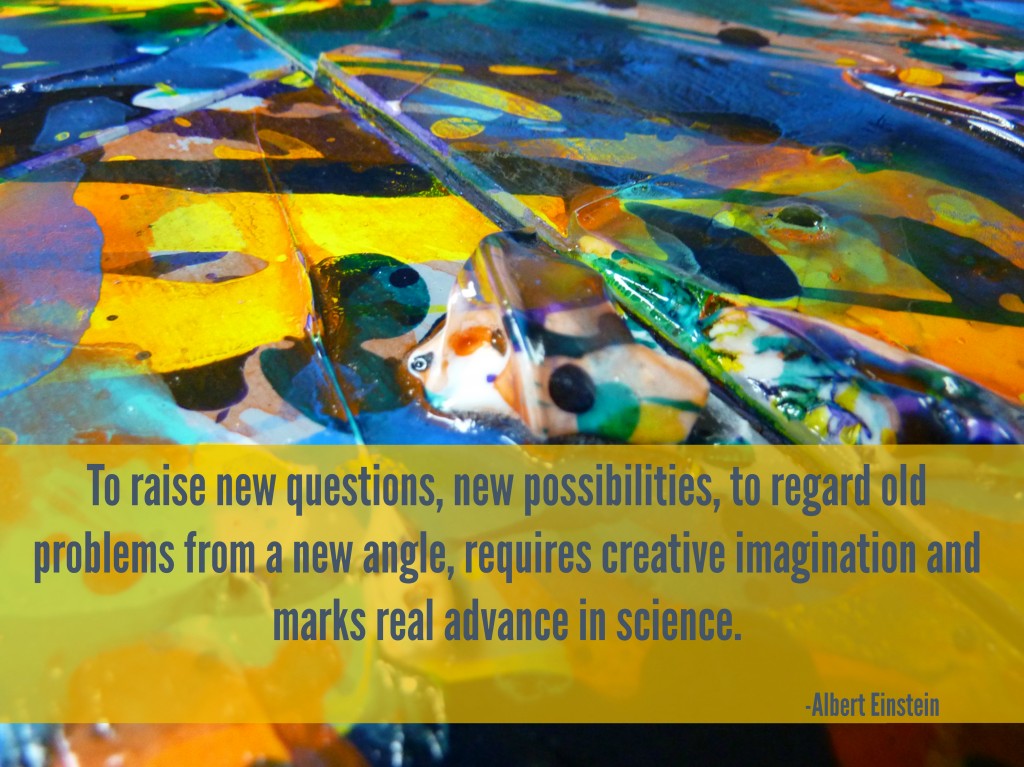PuzzleArt Therapy: How it Came to Be
My life was on track and I was going places. I was a talented young executive in my 30s, still enjoying the invincibility of youth. For a decade, I had my own international award-winning design and marketing firm in NYC, with some two dozen employees. I wasn't on my way to living the dream – I was living the dream! I had worked tirelessly to get there, and I never imagined I could lose it all in an instant. But everything changed when I suffered a stroke.
No one expects their life to change dramatically and without warning, especially with something like a stroke, which most people think of as “something that happens to someone else,” or someone older, or someone more disease prone. But it happened to me, and suddenly, everything in my life was changed.
A cerebrovascular accident (CVA) or stroke occurs when blood flow to the brain is restricted and it results in cell death in the brain. Stroke survivors' lives are impacted in different ways, and the effects of the stroke depend mostly on the location of the stroke and the extent of brain tissue damage. Common effects include:
- Paralysis on the opposite side of the body where the stroke occurred
- Memory loss
- Speech/language problems
- Vision problems
- Changes in behavior
In the following years, I found myself on a seesaw. One part of me missed the fast-paced excitement of the business world. That was the life I wanted, but I could no longer function in it. My pragmatic half, however, moved toward new horizons.
Finding a New Path to Recovery
After my debilitating illness, I was grateful my right side was still working and my long- term memories were intact, but I felt adrift. It was difficult to concentrate. Short term memory deficits plagued me, and aphasia impacted my communication skills. I didn’t know where to turn, but I knew something had to change.
When I suffered the stroke and then began the long road to recovery, I had made a promise – to myself, to the universe – that if I got through this, I would give back to humanity. I wasn't sure what that would mean, or how it would look, but I knew I would spend my life giving back.
At that point in my journey, I was working on finding a new normal and recovering from my stroke, when one day, I felt restless. I felt the urge do something creative. I realized I had so much art bursting out of me, so much to say with color, shape, texture, and line.
I had always been artistic and loved anything to do with my hands: painting, sculpture, calligraphy arts, crafts, flower arranging, trompe l’oeil, Japanese sumi-brush, weaving, needlepoint, crocheting, knitting, macrame, gardening, sewing, cooking — the list just went on and on.
But above all, there was always painting. So I began again, putting color on canvas and letting expressions of color, shape, texture, and line take over. I was always covered in paint. To this day, I don’t think there is much in my closet that isn’t paint-spattered, unless it’s brand new. But as I painted, I began to recover myself in ways I hadn't expected, though it's certainly not shocking given what a transformative and powerful tool we have in art as a therapy.
What came out of all the personal challenges of those years was a system I slowly developed; it was a way to connect with all the answers the world was offering me. To understand my own circumstances, I had delved into the world of neuroscience and vision therapy, connecting the dots between vision and brain health, learning the best ways to promote optimal brain activity and brain-body communication, and systematically putting those tools into practice.
From Pain to Progress to PuzzleArt
The result was PuzzleArt Therapy, a way to find happiness and live younger, live longer, and get stronger. PuzzleArt Therapy was born out of my journey from a debilitating stroke, and what began as an exploration of creativity and color and line for myself, grew into a visual perceptual therapy system designed to stimulate the brain and improve over 20 different skills.
As I collaborated with neuroscientists, behavioral optometrists, anti-aging experts, and educators in order to realize the potential of PuzzleArt Therapy, it dawned on me that I had found my way to give back, and I've been doing it ever since, dedicated to creating my own best life by helping others create theirs. I use PuzzleArt Therapy myself every day and I see the results in my own life on a continual basis.
PuzzleArt Therapy was developed out of a specific need, but its applications are truly endless. Sign up to try out my free brain game, and may you live younger, longer, and stronger through creativity every day!
Alli Berman is a Brain Fitness expert and the Eye Brain Fitness Guru. She has been an artist, author, educator, creativity consultant, workshop leader, perceptual and sensory products and programs developer, and motivational speaker for the past 30+ years. Berman has served as an educational advisor to the American Academy for Anti-Aging Medicine for over 30 years, and she is the founder of The Art of Rehabilitation and Anti-Aging Art. She created the PuzzleArt Therapy System in collaboration with behavioral optometrist, Susan Fisher, OD, and through consultation with neuroscientists around the world. Berman uses the system herself on a daily basis to keep her own brain as healthy, engaged, and challenged as possible!


